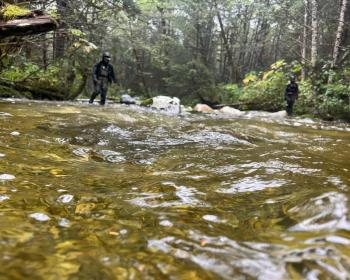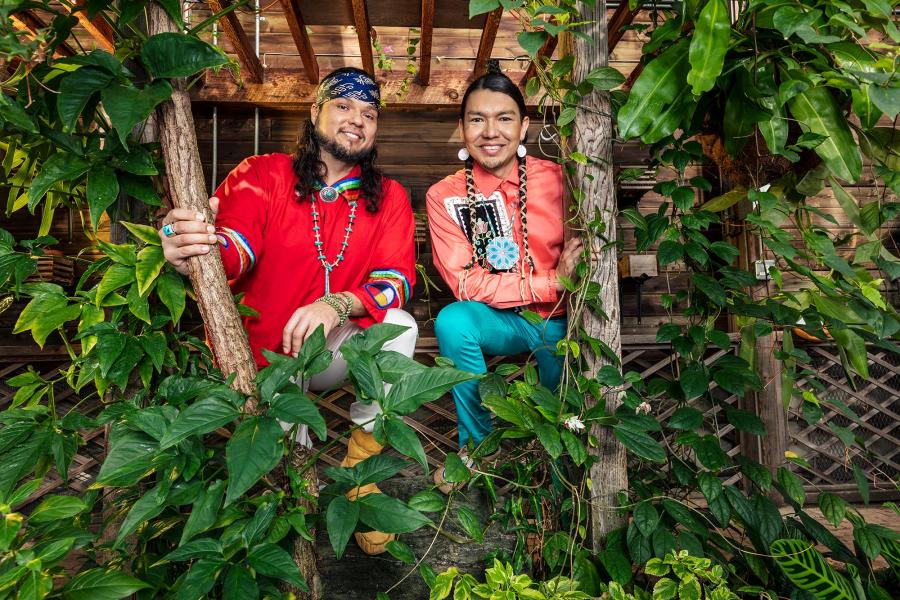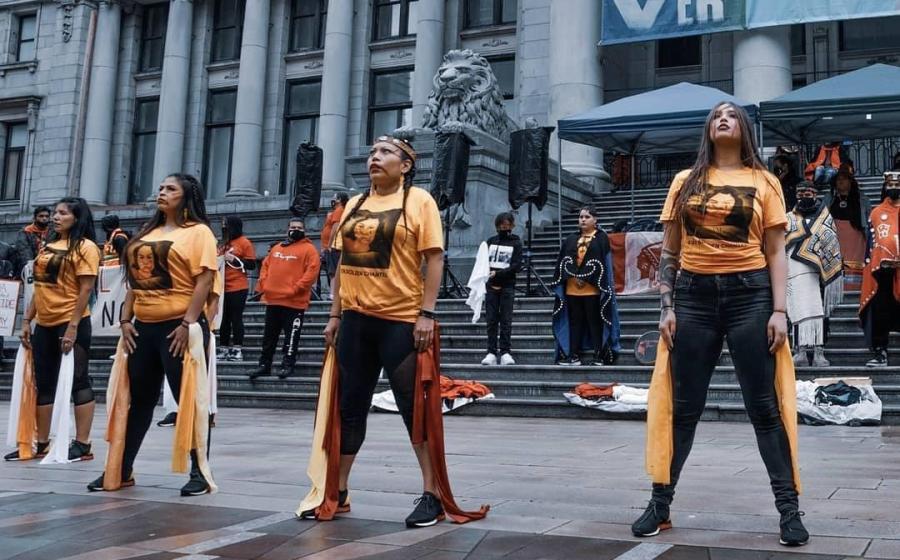Policy debates on tourism within the United Nations and other multilateral institutions have underlined the urgent need for indigenous peoples to consolidate a position on criteria for sustainable tourism. There is a danger that pending international accords on tourism could create a mirage of consensus. Furthermore, these accords could serve to legitimize forms of ecotourism that have net negative impacts at the local level. For indigenous peoples, the threat is immense, given that there is currently no effective regulatory system to protect their cultures and cultural property from industry profiteering.
Since 1997, intergovernmental dialogue on tourism has commenced on a variety of fronts. These discussions now have unprecedented scope and momentum, but remain top-heavy. Poor communications by coordinators, especially with groups outside the usual set of international policymakers and meetinggoers, has made it difficult for indigenous organizations formally mandated by their peoples to defend their customary rights or negotiate for improved governance and business relationships.
One immediate question raised by the intense focus on tourism policy is the purpose that it can serve. The objective in theory is to define comprehensive new standards for the tourism industry; however, governments are frozen in the mentality of undertaking consultation with indigenous peoples as opposed to building partnerships for joint problem solving. Time and time again in other sectors, this approach to policy development has resulted in tokenism, designed to secure tacit consent for business as usual. More of the same seems to be unfolding in relation to tourism.
Tourism policymakers are bypassing the opportunity to build an inclusive policy process consistent with evolving statutory obligations. Once more, governments are ignoring the framework of legislation, policy, and principles developed within the U.N. to guide relationships between states and indigenous peoples, such as the Draft U.N. Declaration on the Rights of Indigenous Peoples and findings of the U.N. Special Rapporteur on treaties. As well, countries with explicit directives concerning indigenous peoples, like Canada's 1997 Delgamuukw Supreme Court decision and the Phillippines' Ancestral Domain Law, are either selectively applying or outright abandoning them in multilateral talks.
Within policy circles, indigenous peoples are conspicuously absent from substantive discussions on how sustainable tourism can be implemented. Indigenous homelands are some of the most marketable ecotourism destinations worldwide, due to the sophisticated stewardship practices applied over millennia; yet governments and industry preside over critical analysis and decision making. This conflict of interest foreshadows continued rapid losses of biological and cultural diversity due to tourism. At first glance, the challenge for indigenous peoples is how to effectively access decision-making processes where tourism policy is being formulated. Making inroads here can be worthwhile, as it is an opportunity to reiterate on yet another front how such processes infringe on indigenous rights. Nonetheless, indigenous peoples know too well that being present at these talks can also prejudice their rights, since governments usually interpret this participation as support.
Regardless of which course of action indigenous leaders prefer from a political standpoint, there are several technical issues to address quickly if the continued and accelerating erosion of traditional resource rights through ecotourism is to be averted. An opening exists now within international policy arenas for indigenous peoples to press for standards and methodologies that protect rather than destroy traditional lifestyles and customary practices. Connected to this, there is the possibility of promoting indigenous tourism as a model for both sustainable ecotourism and self-determination in development.
Below is a brief description of the major policy discussions on tourism globally that have implications for indigenous peoples. In each case, there are some opportunities, which indigenous organizations are working together to identify.
U.N. Convention on Biological Diversity
The Convention on Biological Diversity (CBD), signed by 175 countries since 1993, has been instrumental in raising awareness internationally on ecotourism. Party governments held a Ministerial Roundtable on tourism in Slovakia in May 1998 to discuss Germany's proposal that global tourism guidelines be created under the CBD. Controversial discussion followed, prompted largely by the lack of clarity over how such guidelines could be made practical. Indigenous peoples had limited opportunity to monitor or influence this dialogue due to the lack of due diligence by session organizers to: 1) notify them that tourism was on the agenda; and 2) arrange proportionate funding for analysis, communications, and attendance by indigenous tourism practitioners.
The German team spearheading the CBD tourism initiative used the infamous "one window" approach to consultation, inviting a single indigenous organization, the Peru based Indigenous Peoples' Biodiversity Network (IPBN), to review the proposal five weeks before it was tabled. Other indigenous groups learned of the initiative upon arrival in Slovakia. Like the IPBN, they were participating in concurrent talks on Article 8(j) of the CBD (see more on Article 8(j) below). Consequently, none of the 200 or so indigenous representatives had opportunity to prepare advance submissions, observe the full Roundtable, or deliver intervention speeches to the delegates' tourism working groups. Instead, they had to rely on information filtered back to them via supportive non-governmental organizations (NGOs). The IPBN coordinated with the International Support Group for Sustainable Tourism (ISGST) to develop responses and draw attention to indigenous peoples' traditional resource rights impacted by ecotourism.
Decisions on future action under the CBD will take place in June 1999. Next steps will likely feature the identification of best practices for sustainable tourism, assessing existing case studies plus parallel initiatives like the ecotourism best practices being compiled by the U.N. Environment Program. There is potential for indigenous expertise on sustainable ecotourism to gain high visibility as this synthesis is completed. Illustrating this are the best practices case studies prepared by the Canadian Tourism Commission for submission to the U.N. Commission on Sustainable Development (CSD) in April 1999; three of the 10 successes profiled nationwide are indigenous tourism enterprises.
Article 8(j) of the CBD
The CBD provides indigenous peoples with considerable leverage for both advocacy and leadership with regard to tourism standards. Article 8(j) of the CBD legally obliges governments to protect and promote indigenous knowledge systems for the conservation and sustainable use of biodiversity, while ensuring the equitable sharing of related benefits. The significance of this provision and other related articles to the practice of ecotourism has yet to be spelled out. However, it clearly lays the foundation for indigenous peoples to define sound technical parameters for ecotourism, in accordance with customary practices.
Countries are now beginning to map out how they will respectively implement Article 8(j). A few, like Colombia and South Africa, have promised to include indigenous peoples in the development of their national ecotourism strategies.
For such overtures to yield tangible results, governments must first honor indigenous peoples' land rights. Otherwise, indigenous communities cannot regulate or abstain from ecotourism, much less establish themselves as entrepreneurs with successful indigenous tourism enterprises.
The Berlin Declaration
One promising way for indigenous peoples to activate the protection afforded by the CBD is to hold governments accountable to the Berlin Declaration on Sustainable Tourism. This accord was signed by the European Commission, UNEP, the Secretariat of CBD, the World Conservation Union (IUCN), and 18 individual countries in 1997 to guide policy development under the Convention.
Through the Berlin Declaration, international leaders agreed that tourism should be restricted, and where necessary, prevented, in ecologically and culturally sensitive areas. There is still no accepted definition of what constitutes culturally sustainable tourism. This means that indigenous communities face an immense burden of proof in registering an area as sensitive. If required to document traditional uses, their intellectual property rights and the right to religious freedom may be jeopardized. Indigenous peoples have an opportunity to give concrete shape to the Berlin Declaration by developing criteria, methodologies, and technologies for culturally sustainable tourism.
U.N. Commission on Sustainable Development
A systematic review of the tourism industry is underway within the CSD in 1999. Indigenous peoples do not have the same weight within this process as in the CBD talks. Chapter 26 of Agenda 21, "Recognizing & Strengthening the Role of Indigenous People and Their Communities," is the guiding principle for indigenous involvement. However, this text has become functionally subservient to the Agenda 21 umbrella principle of stakeholder participation, despite the backdrop of Article 8(j). Indigenous peoples, though a major group affected by tourism, and though having a priori rights, are confined to the same consultative position as third party NGOs.
Thus far, the proceedings on tourism within the CSD have had a disturbing void in relation to indigenous rights. A series of papers was commissioned by the CSD bureau through the NGO caucus. The Indigenous Peoples' Development Network (IPDN), a sister organization to the IPBN that works with southern indigenous communities on tourism, was invited to contribute to the paper titled Tourism and Communities. None of the key observations or suggested changes made by the IPDN were incorporated in the paper. Similar frustrations were met by the IPDN during the NGO caucus' strategy sessions at the February 1999 CSD inter-sessional meeting. The IPDN and ISGST jointly drafted text to replace paternalistic language toward indigenous peoples in the NGO draft paper on tourism. However, the discussion procedures prevented much headway, due to time-lines and the competition among participating NGOs. Again, the IPDN could not endorse the final product. It was a familiar situation: Whether you show up and raise pressing issues, or don't show up at all, you're considered consulted.
It is unclear what the outcomes of the CSD inquiry on tourism will be. As with the CBD, the end product(s) could be redundant and simply echo existing protocols on sustainable tourism if the ecosystem approach is not enacted, and indigenous peoples continue to be excluded from analysis and decision making. Nevertheless, the CSD is a high profile forum where indigenous peoples can put on public record their distinct needs regarding industry reform, while lobbying for public and private sector compliance with the international legal and policy framework on indigenous rights.
There are several critical areas where targeted support from development agencies and NGOs is required. Basic prerequisites for indigenous self-determination in tourism include:
- Reviews, comparative studies, and pilot projects conceptualized and controlled by indigenous peoples themselves
- The creation of criteria, indicators, and early warning systems for sustainable tourism based on indigenous knowledge, community level development and testing of protective mechanisms, e.g. instruments of prior informed consent, agreements for access and benefit sharing, protocols for consultation and research
- Readiness to negotiate, e.g. equivalent technical capacity and access to information
- Methods and conditions for documenting traditional uses and providing feedback that preserve intellectual property rights, religious freedom etc.
- Provision for indigenous knowledge, record keeping, and governance systems in joint management arrangements
- Respect for land rights.
The WlPO Roundtable on Intellectual Property & Indigenous Peoples
Some of the threats posed to indigenous peoples by tourism are surfacing in other multilateral discussions, from UNESCO's International Symposium on Natural Sacred Sites, Cultural Diversity & Biological Diversity in September 1998 to the new Indigenous Knowledge for Development Initiative launched by the World Bank in partnership with UNESCO, UNDP, the International Labour Organization, the World Intellectual Property Organization (WIPO) and a handful of other development agencies and NGOs. A common objective of these debates is to search for appropriate means to establish partnerships and business relationships with indigenous peoples.
Of particular note is the WIPO Roundtable on Intellectual Property & Indigenous Peoples. During the first session in July 1998, tourism concerns dominated the discussion. Indigenous peoples there raised numerous examples of piracy, from the unauthorized use of photos and cultural symbols on industry posters, tourism brochures, postcards, and teatowels to the recording, copying, and staging of indigenous songs, dance, and sacred ceremonies. Increasingly, another problem is the appropriation of medicinal plants knowledge -- by conservation NGOs selling ecotourism trips to indigenous homelands to offset research costs, or by government agencies party to joint management agreements with indigenous peoples for protected areas.
WIPO has its hands full redressing the holes of the intellectual property rights (IPR) regime. The established system of copyright, patents and other instruments for protecting intellectual property does not offer protection to indigenous peoples in many key areas, including:
- The use of cultural images in industry marketing
- The staging of performances for tourists
- The maintenance of collective property generically labeled as "folklore"
- Sacred elements of indigenous knowledge and practices.
These shortcomings are acknowledged by WIPO and have been referred to its new Global Intellectual Property Issues Division (GIPID), but resourcing is an outstanding concern.
It is at the ground level, within indigenous communities where business proposals and transactions concerning tourism take place, that effective regulatory instruments must be developed, and negotiating capacity needs to be built. Indigenous peoples urgently require the means and support to:
- Track the advances made by indigenous organizations in negotiations with organizations like WIPO
- Exchange strategic information, e.g. the draft U.N. Principles & Guidelines for the Protection of the Heritage of Indigenous Peoples
- Share existing tools for protection, e.g. the Mataatua Declaration submitted to the 1993 U.N. Working Group on Indigenous Populations
- Devise new tools for protection at the community level, incorporating customary laws.
Conclusion
The momentum of tourism policy discussions in the past year points to a need for local knowledge and experiences to be communicated to the international level. Indigenous peoples have an opening to define the ways in which tourism could promote traditional knowledge systems. Innovations in this regard would provide a precedent not only for setting standards internationally and removing the wide margin of "good intentions" in the self-regulated tourism industry, but also for helping development agencies and NGOs to establish productive funding criteria and practical linkages with indigenous organizations and communities.
Currently, little funding is available for indigenous innovations in the tourism sector. Northern environmentalists concerned about impacts have successfully lobbied governments against funding tourism projects. As a result, indigenous proposals for analyses and pilot projects involving tourism are processed slowly, despite their huge qualitative difference of approach. This points to a need for governments and other support agencies to institute development assistance policies that distinguish indigenous tourism, i.e. tourism that originates and is directed from within the community, as a potentially important component of self-determination.
Finally, it is widely known that few proposals for tourism and related community development projects are generated at the ground level. A vital step toward strengthening indigenous decision making, innovation, and management capacity is to assess the reasons why communities have difficulty navigating and accessing the existing channels for funding and technical support. The sooner indigenous communities are in a position to be direct proponents of project proposals, the sooner they can acquire the means to choose whether they want a tourism economy, and if so, to control the quality of tourism practiced within their homelands.
Article copyright Cultural Survival, Inc.



